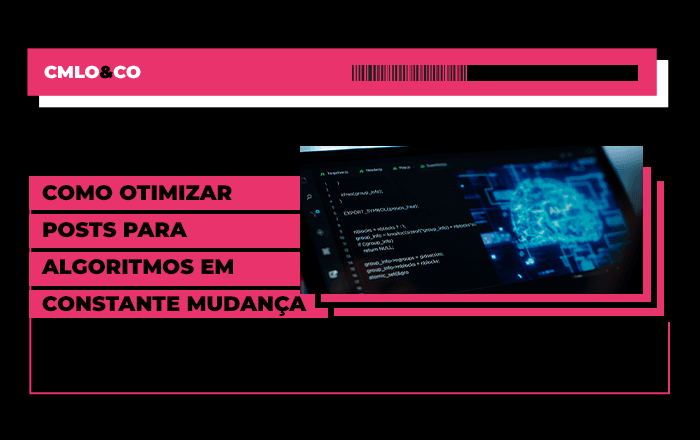In the world of marketing, where competition is like an obstacle course, it's important to have strategies that help us cross every barrier. One such strategy is 360 marketing. But what does it really mean?
Imagine you're putting together a jigsaw puzzle. Each piece is a part of your business: your online presenceYour ads, what people say about you. 360 marketing is like putting this puzzle together so that all the pieces fit perfectly, creating a clear and consistent image of your brand.

In this article, we'll explore this marketing approach in detail, from what it is to how to implement it in your company. So stay with us and discover the secrets behind this innovative strategy!
What is 360 marketing?
Also known as integrated or holistic marketing, it is a way of thinking and doing marketing that considers all the points of contact between the brand and the target audience, from market research to after-sales, including the creation, production, distribution and measurement of campaigns.
The aim is to create a unique and consistent experience for the consumer, regardless of the channel or medium used. In this way, the brand can differentiate itself from the competition, strengthen its image, build customer loyalty and increase sales.
How does 360 marketing work?
Holistic marketing works on the basis of four pillars: analysis, planning, execution and evaluation. Here's how each one works:
Analysis
This is the stage in which a diagnosis is made of the brand's current situation, the market, competitors and consumers. The analysis includes tools such as market research, SWOT analysis, BCG matrix, empathy map, among others.
Planning
This is where the objectives and goalsIt also includes strategies and tactics to achieve the expected results. Tools such as the marketing plan, Ansoff's matrix, marketing mix, etc. are part of planning.
Execution
This is the phase of 360 marketing in which the planned actions are put into practice, using the available resources and the appropriate channels for each audience. This is where tools such as a timetable, budget and briefing are used, among others.
Evaluation
Last but not least, this is the stage in which the results obtained from the actions carried out are measured and compared with the objectives and targets set. Performance indicators (KPIs), return on investment (ROI) analysis, among other tools, are used in the evaluation.
Which areas are part of 360 marketing?
As a comprehensive strategy, integrated marketing involves various areas of marketing knowledge and practice, such as:
Digital marketing
A set of actions carried out on the internet to promote a brand, product or service. It includes strategies such as SEO (search engine optimization), SEM (search engine marketing), social media, email marketing, inbound marketing, content marketing, among others.
Offline marketing
Offline marketing, on the other hand, is the set of actions carried out outside the internet to promote a brand, product or service. It includes strategies such as advertising (television, radio, newspaper, magazine), promotion (events, fairs, giveaways), merchandising (point of sale), public relations (press office), among others.
Direct marketing
As its name suggests, it includes practices that allow direct communication with the target audience, without intermediaries. In other words, it involves strategies such as telemarketing (telephone), direct mail, SMS (text message), among others.
Integrated marketing
Integrated marketing refers to the set of actions carried out to integrate the different areas of 360 marketing, creating a synergy between them.
It therefore includes strategies such as crossmedia (use of various media), transmedia (use of various platforms), storytelling (use of narratives), among others.
The importance of 360° marketing
360 marketing is important because it recognizes the multifaceted nature of consumer behavior and the growing interconnectedness between different communication channels. Some advantages of this approach include:
- Increased brand reach and visibility in the market;
- More engagement and interaction with the target audience;
- Greater efficiency and effectiveness in communication actions;
- Personalization and segmentation of the target audience;
- Greater credibility and trust with consumers;
- Saving and optimizing resources;
- Consistency and coherence in the message conveyed;
- Increased competitive advantage over competitors;
- Greater innovation and creativity in the solutions proposed;
- More profitability and return on investment.

The main tools of 360° marketing
Holistic marketing has several tools to help with its implementation, such as:
- 360 communication plan: document that gathers all the information needed to plan, execute and evaluate the actions of integrated communication of the brand;
- CRM (Customer Relationship Management): enables effective management of customer relationships, guaranteeing personalized and relevant communication;
- Marketing automation: helps automate repetitive tasks and send personalized messages to customers at different stages of the sales funnel;
- Data analysis: provides valuable insights into customer behavior and the effectiveness of marketing campaigns;
- Content management platforms: facilitate the creation, distribution and management of content on various channels;
- Consumer journey map: a resource that allows you to identify and understand the stages the consumer goes through from the moment they recognize a need to the moment they make a purchase or recommendation.
How can you implement a 360 communication plan in your company?
To implement a 360 communication plan in your company, you need to follow these steps:
- Do a situational analysis of your brand, your market, your competitors and your consumers;
- Define the objectives and goals you want to achieve with your 360 communication plan;
- Identify your target audience and segment them according to their characteristics and preferences;
- Elaborate your message and define your positioning and your competitive edge;
- Choose the strategies and the most appropriate tactics for each audience, channel and medium;
- Execute planned actions with quality and agility;
- Evaluate the results obtained with your 360 communication and make the necessary adjustments.
As we have seen, 360 marketing is a powerful approach to reaching and engaging consumers in an increasingly digital and interconnected world.
By integrating all areas of marketing and offering a consistent and personalized experience, brands can stand out from the competition and build lasting relationships with customers.
If you enjoyed this article and want to continue exploring the latest marketing trends and strategies, we invite you to follow CMLO&CO's blog, full service agency and strategic business partner. See you next time!







